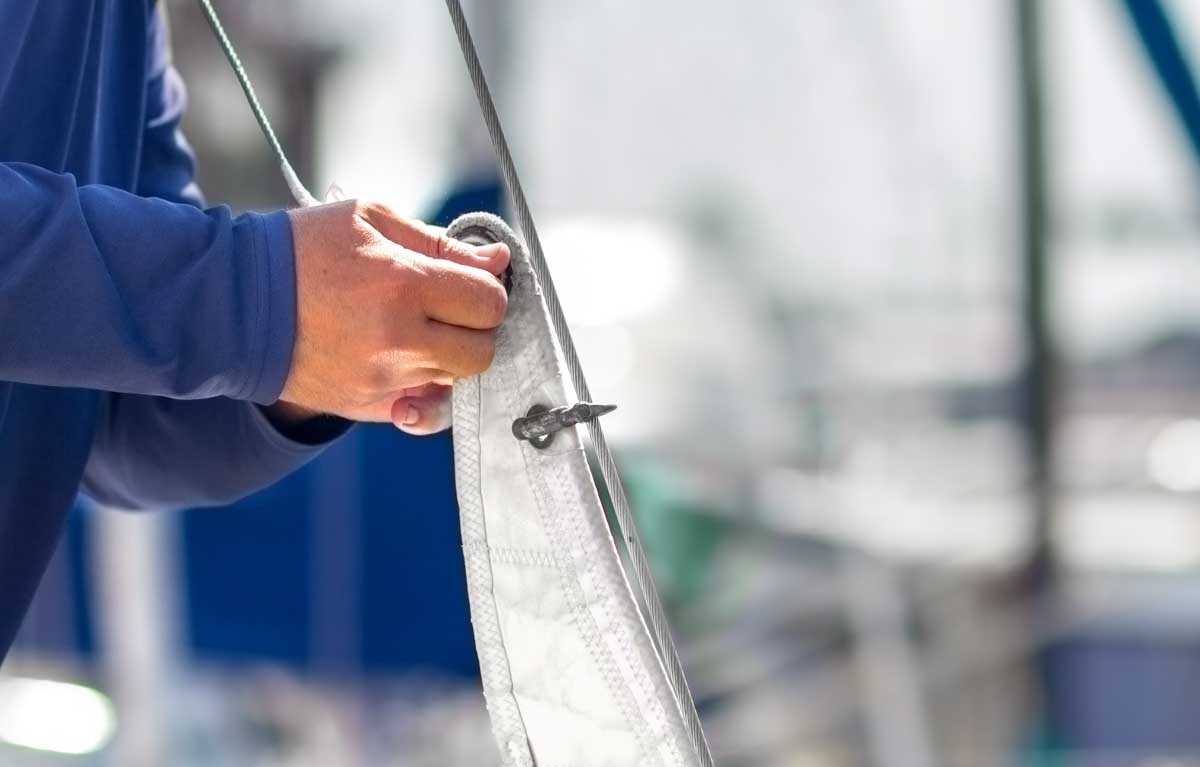Sailboat Prep: Basic Steps to Going Sailing

When I first started sailing, I didn’t find that helming or crewing the boat was that hard. What was challenging was remembering all the steps for getting a both ready to go sailing.
To help me remember the steps of prepping a sailboat, I put together a check list. It cover the bare essentials and assumes a fairly simple keel boat — I learned on a Catalina Capri 22.
1. Final Weather & Tide Check
- Check the Weather: Confirm favorable conditions (wind, tide, current) before departure.
- Tide & Current Conditions: Be aware of any local tidal changes or current that could affect your departure.
2. Boat Inspection
Before you hit the water, you need to make sure the boat is in ship shape. Some of these things aren’t necessary every time you sail – for instance your probably not going to do a detailed inspection of your sails, rigging and lines each time.
- Inspect the Hull: Examine the hull, keel, and rudder for any damage, such as cracks or blisters.
- Check the Rigging:
- Standing Rigging: Inspect shrouds, stays, and turnbuckles for proper tension and signs of wear.
- Running Rigging: Check halyards, sheets, and lines for fraying or damage.
- Safety Equipment:
- Life Jackets: Ensure an adequate number of life jackets are onboard.
- Life Ring: Confirm the life ring is accessible.
- Sounding Device: Make sure you have a horn or whistle.
- Flares: Verify flares are available and within expiration dates.
- Check the Sails: Inspect the main sail and jib for tears or excessive wear. Make sure they’re properly rigged and in good condition.
3. Critical Gear Check
- Winch Handle: Ensure the winch handle is aboard and in working order.
- Engine Fuel: Check the fuel levels in the auxiliary engine and top off if necessary.
- Communication Device: Ensure your VHF radio or other comms devices (even a smartphone if you are within range) are charged and functional.
4. Rig the Boat
The Capri 22 I learned didn’t require setting up the mast or boom, but some boats do require stepping the mast, attaching the boom, and rigging the lines. If that’s not the case, you can skip some or all these steps–though at a minimum you’ll likely need to attach the halyard to the mainsheet on a simple boat.
- Step the Mast: If necessary, step the mast securely, making sure it’s properly aligned.
- Attach the Boom: Secure the boom to the mast at the gooseneck fitting.
- Bend on Sails: Attach the main sail to the boom and halyard, and secure the jib/genoa to the forestay and halyard. .
- Install Sheets: Rig the main and jib sheets through the blocks and winches.
5. Prepare the Cabin & Below Deck
- Secure Loose Items: Stow or secure any loose items below deck to prevent movement while underway.
- Check the Bilge: Pump out any water and ensure the bilge pump is working properly.
- Engine Check: Start the auxiliary motor, check fuel levels, oil, and engine condition. Make sure it’s running smoothly.
6. Brief the Crew
- Safety Briefing: Inform the crew of safety protocols, including the location and use of life jackets, flares, and the VHF radio.
- Roles & Responsibilities: Assign tasks to the crew, such as who will handle the lines, winches, or helm during departure.
7. Dockside Preparation & Hoisting the Sails
- Hoist the Mainsail:
- Undo the Cover: Remove the sail cover from the mainsail.
- Attach the Halyard: Secure the main halyard to the head of the mainsail.
- Release the Mainsheet: Loosen the mainsheet to allow for smooth hoisting.
- Hoist and Secure the Mainsail: Pull the halyard to hoist the mainsail and secure the halyard once fully raised.
- Release Boom Topping Lift: Undo the topping lift, which holds the boom up when the main sail is down.
- Untie from the Dock: Ensure lines are ready to be released, and fenders are in position.
- Once underway, hoist the Headsail (Jib or Genoa):
- Attach the Halyard: Secure the foresail halyard to the head of the headsail.
- Hoist the Foresail: Pull the halyard to raise the headsail and secure it once fully hoisted.
- Or for a Furling Headsail: If you have a furling headsail that doesn’t require hoisting, release the headsail sheets and unfurl the sail by pulling on the furling line. Secure the furling line and sheets once the sail is out.
What else?
This list of steps for prepping a small keel boat for sailing is highlevel and assumes you have a basic experience sailing. It’s more of a high level reminder of the steps than a how-to on basic skills.
Obviously each boat is different and the requirments for boats vary by state and country. So make sure you are following local laws and best practices for where you will be sailing, bringing appropriate safety gear and other equipment.
If you see anything essential on here that I missed, please drop me a note in the comments below.






